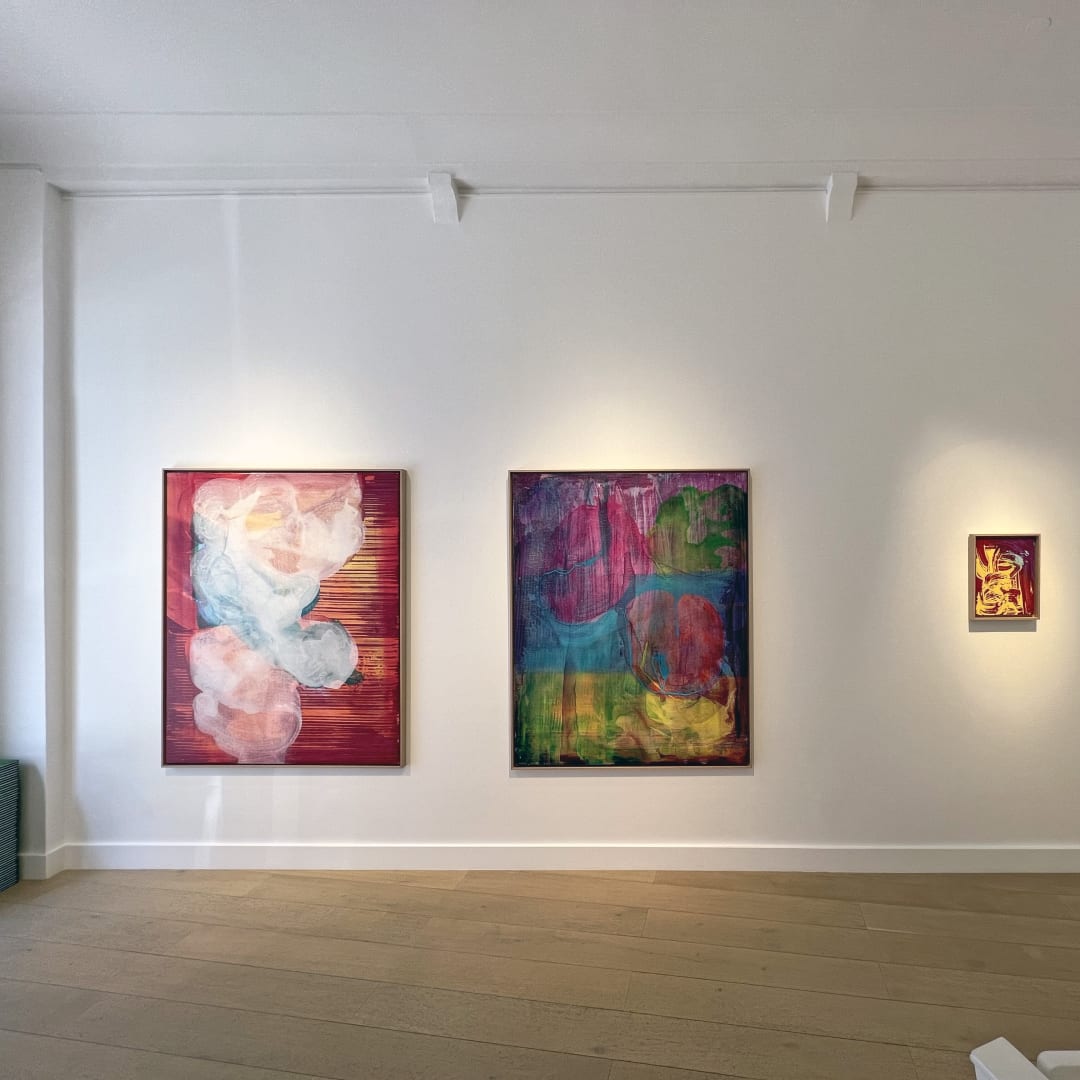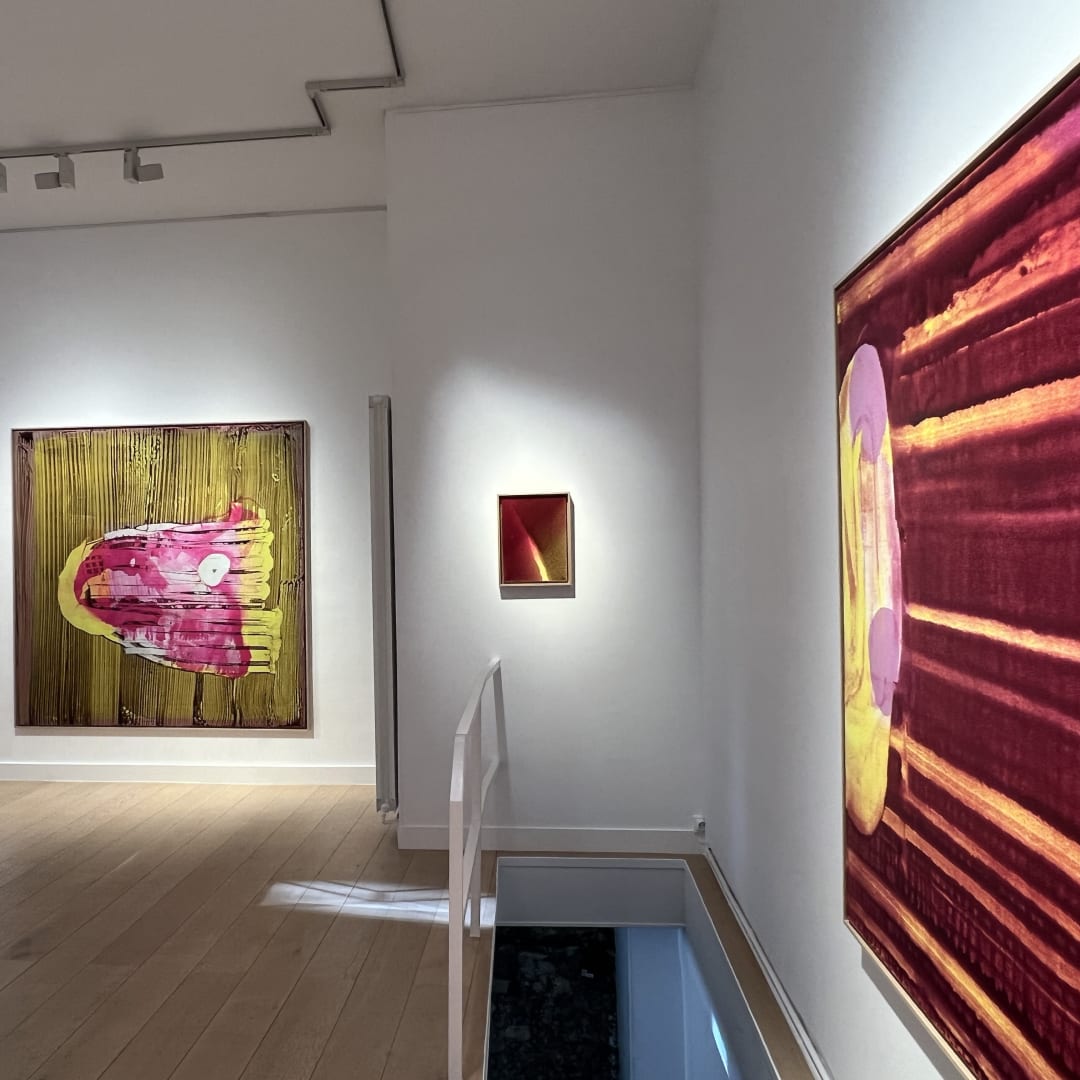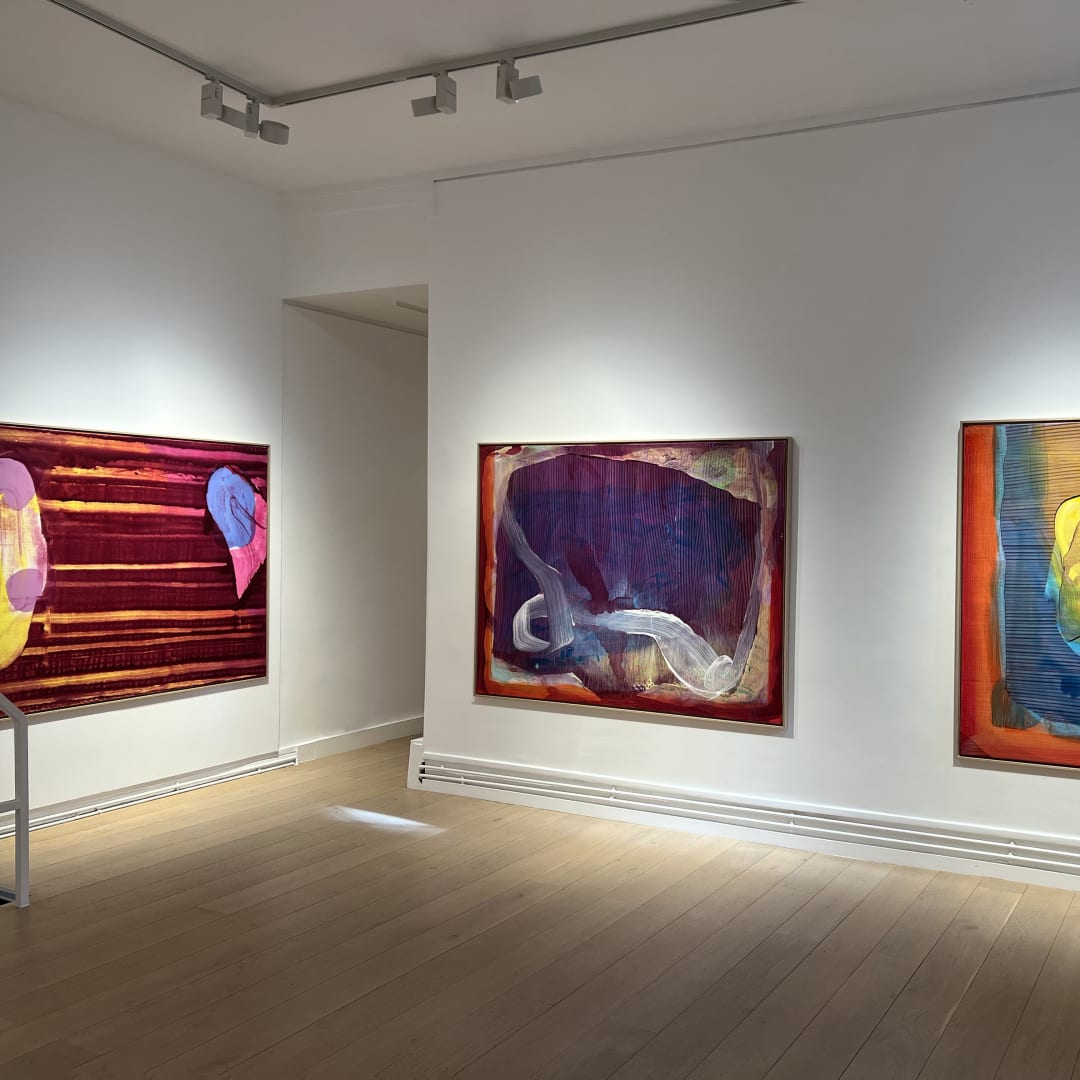→ Informations : info@lefeuvreroze.com
After a group show with Adrian Falkner and Sowat in 2017 and Grands Formats in 2018, Jan Kolata is put forward with Digging holes, the second solo show devoted to the German artist at Le Feuvre & Roze gallery.
Exhibition from March 17 to April 9 2022. Opening on Thursday, March 17 from 6 pm, with the artist in attendance.
A catalogue is published, text by Guy Boyer.
COLOUR OVER STROKE*
In my imaginary art museum, three paintings stand out for their colour combinations: The Deposition from the Cross (1526-1528) by Jacopo Pontormo, White Center (1950) by Mark Rothko, and Spearfishing (2013) by Peter Doig. (You will easily find them in good monographs of these artists-or on the Internet, of course.) The raiment of the figure in the foreground of the first painting associates pale pink, straw yellow, and sky blue. The second work sets abstract swaths of yellow, pink, and lavender against a background of red transitioning to orange. The third painting is supposed to depict a spearfishing scene, but what grabs us is the bright orange and yellow attire of two people in a green canoe, on a black and midnight blue background. In all three cases, we forget the composition, the subject, and the style of the painter. Colour dominates-or rather, colour relationships take precedence over stroke.
Can the same be said of the large paintings of the German artist Jan Kolata? In his work, we can make out more or less geometric abstract forms (circles, curves, and horizontal or vertical parallel lines), suggestive shapes (clouds, whorls, snakes, and spirals), colour blocks finely worked (such as by sanding, engraving, scraping, or dripping), and superimposed layers with opaque and transparent features. Chance has a role, but the artist is in control.
Ultimately, rather than the sweep of the brush, it is the play of colours that holds our attention: red on orange, red on yellow, green on purple, blue on purple, or blue on orange. Through overlaps and the effects of opacity, half-tones and gradations lend complexity to each colour assembly. (...)**
- GUY BOYER
* (extract from the text published as a preface to the catalogue)
** cf. integral text
March 15, 2022






